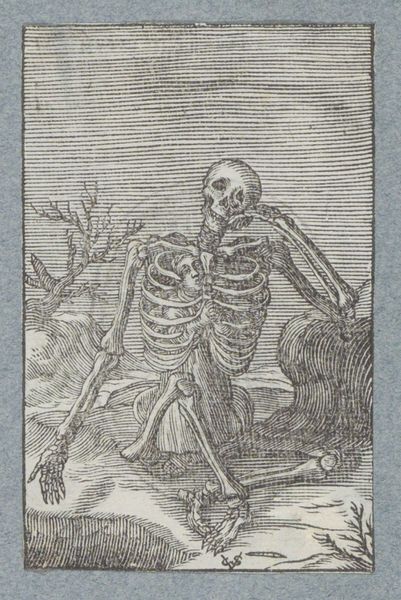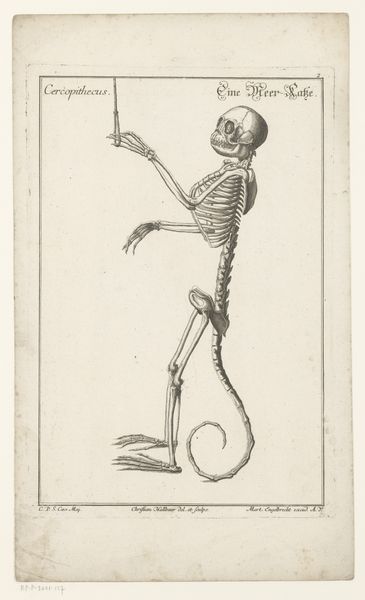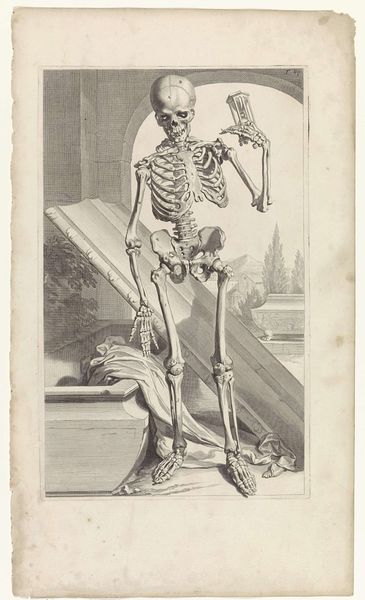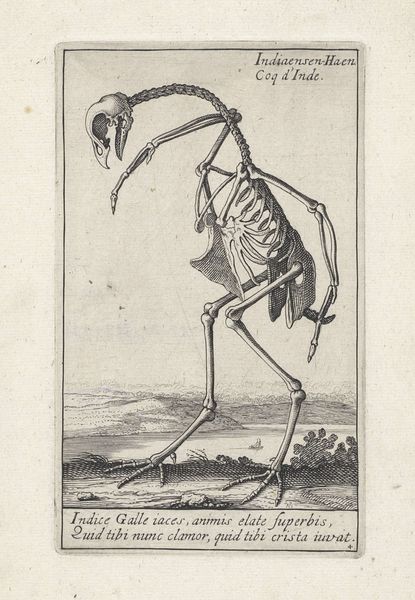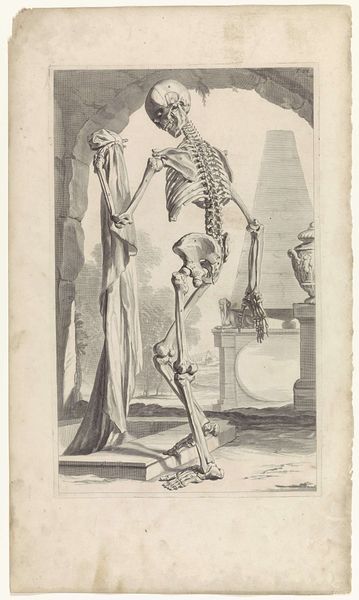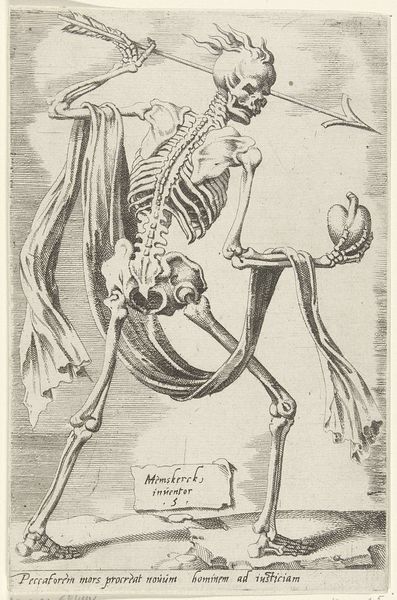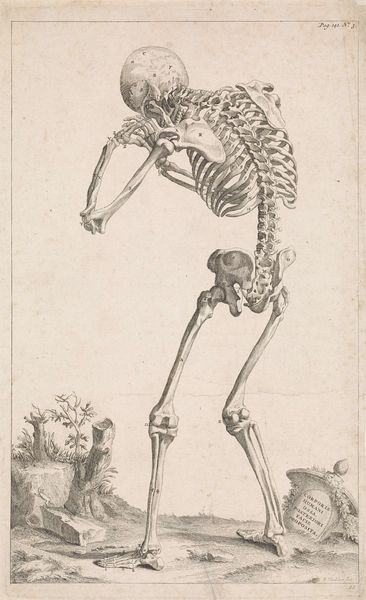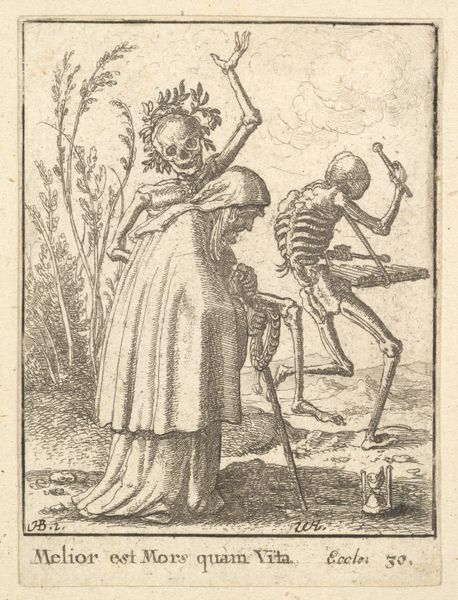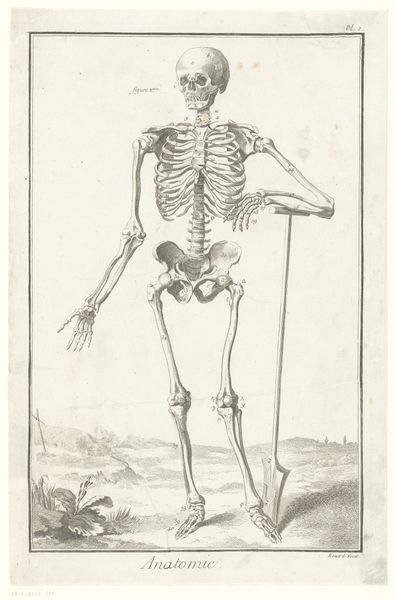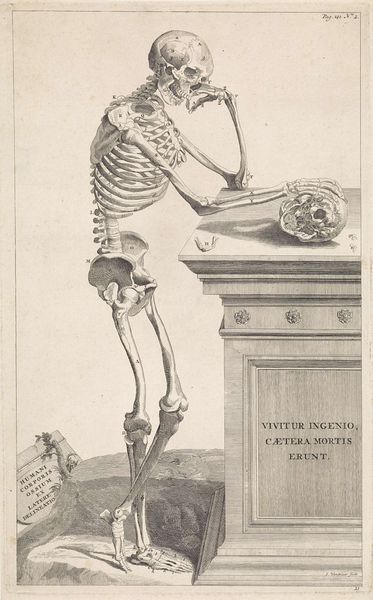
engraving
#
allegory
#
baroque
#
figuration
#
momento-mori
#
line
#
engraving
Dimensions: height 95 mm, width 55 mm
Copyright: Rijks Museum: Open Domain
Editor: So, here we have "Kind in skelet van de Dood gekropen," or "Child curled up in the skeleton of Death," an engraving dating back to somewhere between 1590 and 1624 by Boëtius Adamsz. Bolswert, currently held at the Rijksmuseum. It's... well, it's quite bleak, isn't it? A child hiding inside a skeleton. What's your take on it? What am I missing? Curator: Oh, you’re seeing perfectly, I think! It’s deliciously morbid, isn't it? I imagine Bolswert chuckling darkly as he etched those lines. That skeleton isn't just death, you know, it’s *the body of death*, trapping the tender child within. "Infelix ego homo!" cries the inscription – "Miserable man that I am! Who will deliver me from this body of death?" It’s almost playful, that dramatic flair, but genuinely heart-wrenching if you pause to think of the child’s plight. Don’t you think? Editor: Playful? I mostly saw the despair! But I guess there is that slight tilt to the skull, a wry sort of… resignation? I’m also trying to understand the…style. It’s definitely baroque, but stripped down somehow? Is it because it's just lines, without many shades? Curator: Exactly! It is the line, isn’t it, that lends it that bare, stark feeling. The Baroque loved its drama, but the medium here restricts the flamboyance, focusing the emotion more… directly. You know, it's a classic "memento mori," reminding us of our mortality, but instead of just showing death as an end, it’s a prison! That really twists the knife. Editor: Wow, I hadn’t considered the "prison" aspect before. Makes it even more unsettling. Thanks for that! I'll definitely see this print differently now. Curator: My pleasure! And remember, sometimes the darkness makes the light that much more precious. It's all about perspective, wouldn't you agree?
Comments
No comments
Be the first to comment and join the conversation on the ultimate creative platform.

